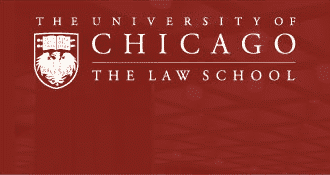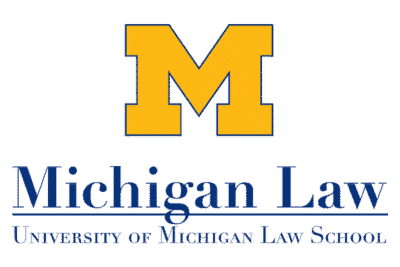A career in law starts with finding the school that fits you best. With the U.S. News rankings of the top law schools, narrow your search by location, tuition, school size and test scores.
Each positioning was switched over completely to a score on a 100-point scale, weighted similarly, and found the middle value of to uncover the program’s Consensus Score. In case of a tie, the middle compensation for both private and public vocations was utilized as the tie-breaking factor.
1. Yale University
Yale Law School

Yale Law has been the top-ranked law school in the country since the ranking system began over 30 years ago. With an acceptance rate below 7% and intense competition for one of its 200 seats each fall, Yale accepts only the top applicants in the country. Since its founding in the early 19th century, Yale Law School has produced a number of distinguished alumni including two U.S. presidents and four current members of the U.S. Supreme Court. Yale Law school also produces more academics than any other law school in the country with upwards of 10% of graduates pursuing careers in academia. A substantial portion of graduates also pursue careers in the judiciary. Despite the relatively low percentage of students pursuing traditional law firm careers (less than 50%), Yale Law still has a median starting salary in the top 5 of all law schools in the country. Due to the academic rigor of Yale Law’s program, the law school discarded the grade point average and students are measured on a simple pass or fail system.
2. University of Chicago
The University of Chicago Law School

The University of Chicago Law School has become one of the most influential law schools in the country in part due to the rise of the law and economics movement of the mid 20th century whose roots were connected to the law school. In its relatively short history, the school has produced a number of notable jurists including several Supreme Court justices. Former President Barack Obama served on the faculty prior to becoming a U.S. Senator. Two of its longtime faculty members–Cass Sunstein and Richard Epstein–are considered some of the important legal schools of the past century. The University of Chicago Law School excels at job placement and its graduates enjoy one of the highest median salary rates in the country. Along with its Juris Doctor program, the law school offers a number of additional degrees including a joint degree with the M.B.A. program.
3. Harvard University
Harvard Law School

As the oldest continuously operated law school in the United States, Harvard Law School is steeped in the history of legal education. Since its inception in the early 19th century, Harvard Law School has helped shape the methodology and curriculum of legal education. A substantial percentage of its graduates matriculate to full-time teaching positions (second only to Yale Law School). Harvard Law School has also produced more U.S. Supreme Court justices than any other school in the country. Unlike other top five programs, Harvard Law School admits significantly more students (over 550) each fall. Despite its large class size, admission is still extremely competitive. Harvard Law also boasts one of the largest and most distinguished law faculties in the country as well as the largest law library in the world. Situated on the main campus of Harvard University in picturesque Cambridge, Massachusetts, the law school building–Langdell Hall–is one of the most recognizable and storied buildings on the entire campus.
Related: What Bachelor Degree to Get If You Want to Be a Lawyer
4. University of Virginia
The University of Virginia School of Law

Founded by former President Thomas Jefferson, the University of Virginia School of Law is set in beautiful Charlottesville, Virginia and is the second oldest law school in the country after Harvard Law School. Since the early part of the 19th century, UVA School of Law has become one of the premier law schools in the country. Along with its traditional Juris Doctor program, UVA School of Law also offers a renowned Master of Law program for students who earned their law degree from a foreign institution. The law school is noted for its quality of life as well as its outstanding faculty. The University of Virginia Law School also boasts a notably diverse student body with more female students than male and over one-third of the student body identifying as people of color. Like most law schools in the top ten, admission is extremely competitive but graduates enjoy one of the highest median salaries in the country.
5. Stanford University
Stanford Law School

Despite its relatively short history, Stanford Law School has become one of the most important and prestigious law schools in the country. One of the most competitive law schools in the country, Stanford Law School’s students boast the highest undergraduate grade point average in the country. Its graduates also have the second highest median salary in the nation. Located outside of Palo Alto, California, the law school has also been a critical player in the rise of the technological hubs located near campus. Starting in the 1960s, Stanford Law also began a campaign to diversify its student body. Today, the school is consistently ranked as one of the top schools for minority students. In 2009, Stanford Law School transitioned to a quarterly system–one of the first law schools in the country to do so. Stanford Law was also a pioneer in adding curriculum for emerging legal fields such as environmental law, law and technology, and intellectual property.
6. University of Pennsylvania

Since the mid 19th century, the University of Pennsylvania Carey Law School has established a reputation for educating practicing lawyers. Penn Law graduates are some of the most sought after by the nation’s largest law firms. With an employment rate over 99% and a median salary close to $200,000 per year, more than 75% of all Penn Law graduates joined large law firms after graduation. The University of Pennsylvania Carey Law School also embraces the University’s larger mission of “One University” through strategic integration with other graduate programs. The law school’s joint program with the renowned Wharton School of Business is one of the most sought-after joint degrees in the country. Located on the main campus in Philadelphia, admission to Penn Law is notably competitive with less than 15% of applicants being admitted. The student body is also diverse with over 40% of students identifying as people of color.
7. Columbia University
Columbia Law School

With its unique location in the heart of New York City just minutes away from Central Park, Columbia University Law School is one of the nation’s top law schools especially for graduates who wish to pursue careers in large law firms. For nearly a decade, Columbia Law graduates have secured employment in the 100 largest law firms in the country more than any other law school. Since its founding, Columbia Law School has also been a key center for the development of legal education as well as American jurisprudence. The law school has produced nine Supreme Court Justices and two U.S. Presidents. The law school is one of many located in the Manhattan borough of New York City with a prime location adjacent to both Riverside and Morningside Parks. Columbia Law admits just over 15% of all applicants but scores remarkably on job placement and median salary.
8. Duke University
Duke University School of Law

Duke University Law School is located in Durham, North Carolina on the west campus of the University, minutes away from Cameron Indoor Stadium, the storied home of Duke’s basketball teams. Since opening in the early 20th century, Duke Law has established itself as one of the premier law schools in the country. Duke Law accepts just over 22% of all applicants and admits less than 300 students per year. In recent years, the law school has made a concerted effort to diversify its student body with minorities making up nearly a third of the admitted students as of 2019. In recent years, the law school has had one of the highest bar passage rates in the country as well as one of the highest median starting salary rates. Durham is located in North Carolina’s “Research Triangle”–one of the fastest growing areas in the country.
9. University of California-Berkeley
University of California, Berkeley, School of Law

The University of California, Berkeley, School of Law is consistently the highest rated public law school in the country. With a job placement rate at nearly 98% as well as one of the most diverse student bodies in the country, Berkeley Law attracts one of the most competitive pool of applicants in the country. Although Berkeley admits close to 350 students each fall, the acceptance rate is still just 22%. The law school has developed a solid reputation for its commitment to progressive legal fields such as environmental law, public interest law, and critical race studies. Over a third of graduates accept positions in judicial clerkships, government offices, or in public interest roles after graduation. The student body is comprised of two-thirds female students as well as over 56% students who identify as people of color. The law school is located in the City of Berkeley, on east of San Francisco Bay in one of the most progressive cities in the country.
10. University of Michigan-Ann Arbor
University of Michigan Law School

With its notable clinical program and focus on international legal studies, the University of Michigan Law School is one of the premier public law schools in the country. With a student body of almost 1,000 students, Michigan Law is also one of the largest law schools in the country. Despite its size, admission to the school is still extremely competitive with less than 6% of applicants enrolling at the school. MIchigan Law also has one of the most revered clinical programs in the nation. Law students participate in over 18 clinical programs that provide them with an array of practical experience to compliment their classroom studies. This practical training has garnered Michigan Law a reputation for graduating “practice-ready” attorneys as evidenced by their 98% employment rate. Michigan Law’s large student population shares a quad of four buildings on the University’s main campus including living, dining, and informal social spaces.